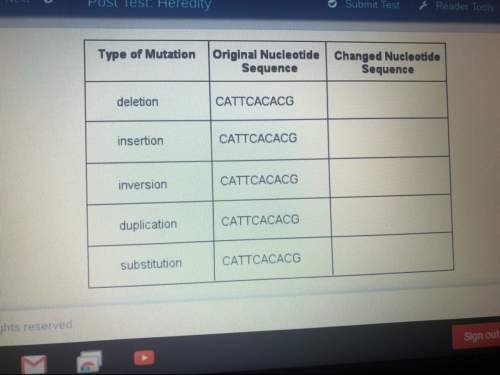
Biology, 22.09.2019 20:00, bsheepicornozj0gc
How can natural selection account for the long snout of an anteater

Answers: 1
Other questions on the subject: Biology

Biology, 22.06.2019 02:00, baidentheodore617
Which of the following is not a food produced in rainforests? a) coffee b) cocoa c) avocados d) wheat
Answers: 2

Biology, 22.06.2019 09:30, ceeejay0621
Juan and carol were studying invertebrates in biology. they knew that segmented or earth worms preferred a dark, moist habitat. during this lab, they would be investigating the responses of organisms called planaria or dugesia tigrina. these were simple flatworms that still had a one-way digestive system and a very simple nervous system. juan and carol placed the planaria in a petri dish containing cool, distilled water that was partially covered with black paper. they shined a light on the dish. next, they removed the paper and placed a small amount of chicken liver at one end of the dish. they added a few large salt crystals to the water. finally, they added drops of hot water to the cool water in the petri dish. their results can be seen in the data table. according to their experiment, all but one conclusion is valid.
Answers: 1

Biology, 22.06.2019 17:10, Isaiahgardiner5143
Communication and transportation have improved as a result of scientific advancements. select the best answer from the choices provided of mark this and return save and exit next
Answers: 3

Biology, 22.06.2019 17:30, xman839
98 points you will be galileo perform the experiment to determine if objects with different mass fall at the same, or different, rates in the air and in a vacuum. before you conduct your experiment, you need to form a hypothesis. a hypothesis is a prediction of what you think will happen in the experiment. the hypothesis is a statement that describes “if” a certain set of circumstances are present “then” there will be a specific result that will occur. record your hypothesis here: record the results from step one of the experiment (dropping the objects in the air): first trial: second trial: third trial: record the results from step two of the experiment (dropping the objects in a vacuum): first trial: second trial: third trial: did the experiment support your hypothesis? using the data from your experiment, describe why you believe your hypothesis was either proven or disproven. what forces were acting on the objects dropped in the air? what force was acting on the objects dropped in the vacuum? part two: comparing forces choose two forces and compare and contrast these forces. you must provide two ways that they are alike and two ways that they are different. you may make a list, write in paragraph form, or make a chart. choose two forces and compare and contrast these forces. these must be different forces than used in the prior question. provide two ways that they are similar and two ways that they are different. you may make a list, write it out, or make a chart.
Answers: 1
Do you know the correct answer?
How can natural selection account for the long snout of an anteater...
Questions in other subjects:

Mathematics, 17.07.2021 01:50


Computers and Technology, 17.07.2021 01:50













